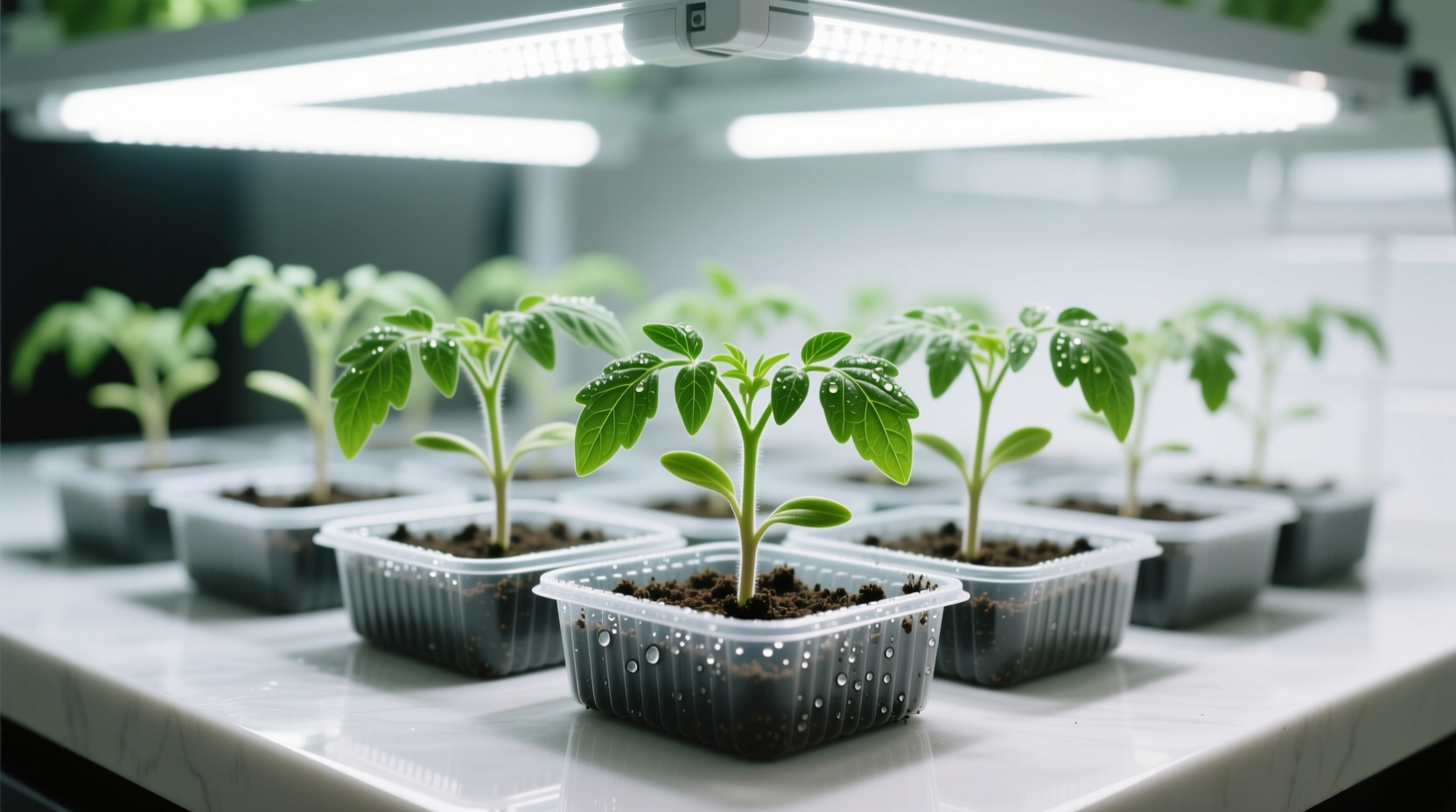Why Start Tomatoes From Seed Instead of Buying Plants?
Starting tomatoes from seed gives you access to hundreds of unique varieties unavailable at garden centers. Heirloom tomatoes like 'Brandywine' or 'Cherokee Purple' often produce superior flavor compared to commercial hybrids. You'll save significant money while gaining complete control over growing conditions from day one. Most importantly, seed-started plants develop stronger root systems when properly nurtured through each growth stage.
Timing Your Tomato Seed Starting Perfectly
Getting the timing right separates successful tomato growers from frustrated gardeners. The critical factor is your local last frost date, which varies dramatically by region:
| USDA Hardiness Zone | Last Frost Date Range | Seed Starting Timeline |
|---|---|---|
| 3-4 | May 15 - June 15 | March 15 - April 1 |
| 5-6 | April 15 - May 15 | February 15 - March 1 |
| 7-8 | March 15 - April 15 | January 15 - February 1 |
| 9-11 | No frost date | 10-12 weeks before dry season |
This data aligns with recommendations from the University of Georgia Cooperative Extension, which emphasizes regional adaptation for successful tomato production. Starting too early creates leggy plants that struggle after transplanting, while late starts miss prime growing season.
Essential Supplies for Success
Don't waste time and seeds with improper equipment. You need:
- Seed containers: Reusable plastic trays with drainage holes (avoid peat pots which restrict root growth)
- Soil mix: Sterile seed-starting mix (never garden soil)
- Light source: LED grow lights (14-16 hours daily)
- Heat mat: Maintains optimal soil temperature
- Moisture dome: Retains humidity during germination

Step-by-Step Seed Starting Process
Preparing Containers and Soil
Filling containers properly prevents common problems. Moisten seed mix before filling to achieve damp sponge consistency. Fill cells leaving 1/4 inch space at top. Gently firm soil without compacting - tomato roots need oxygen. Create shallow 1/4 inch depressions using a pencil tip.
Sowing Seeds Correctly
Place 2 seeds per cell for insurance against poor germination. Cover lightly with vermiculite (better than soil for moisture retention). Water gently using spray bottle to avoid displacing seeds. Label varieties immediately - you'll thank yourself later.
Germination Environment
Place trays on heat mat set to 75°F with humidity dome. Check daily for moisture - surface should stay damp but not soggy. Most tomato seeds germinate in 5-10 days. Remove dome immediately after sprouts appear to prevent damping off disease.
Nurturing Seedlings Through Critical Stages
Once seedlings emerge, proper care determines their future success. Maintain these conditions:
| Growth Stage | Light Requirements | Temperature | Watering Technique |
|---|---|---|---|
| Emergence - 1st true leaves | 14-16 hrs, 2-3" from plants | 70-75°F days, 65°F nights | Mist surface daily |
| 2-4 true leaves | 16 hrs, 4-6" from plants | 75°F days, 60°F nights | Bottom water when top feels dry |
| Transplant ready | 16-18 hrs, 6-8" from plants | 70°F days, 55°F nights | Water thoroughly when top 1/2" dry |
This progression follows research from University of Minnesota Extension on optimal tomato seedling development. Many gardeners fail by keeping lights too far away, causing weak, leggy growth.
Avoiding Common Seed Starting Mistakes
Even experienced gardeners make these preventable errors:
- Overwatering: Causes damping off disease - let top layer dry slightly between waterings
- Insufficient light: Leads to weak, spindly plants - use supplemental lighting even near sunny windows
- Skipping hardening off: Results in sunscald and transplant shock - gradually expose to outdoor conditions over 7-10 days
- Planting too deep: Tomato seeds need light to germinate - 1/4 inch is maximum depth
When and How to Transplant Seedlings
Your seedlings are ready for garden beds when:
- They've developed 5-7 true leaves
- Night temperatures consistently stay above 50°F
- Seedlings have been hardened off for 7-10 days
Plant deeply - bury stem up to first set of leaves. Roots will develop along buried stem, creating stronger plants. Water thoroughly after transplanting and provide temporary shade for first 2-3 days.
Troubleshooting Seedling Problems
Identify and fix common issues quickly:
- Leggy seedlings: Increase light intensity immediately and consider adding supplemental lighting
- Yellowing leaves: Could indicate nutrient deficiency or overwatering - check soil moisture first
- Mold on soil surface: Improve air circulation and reduce surface moisture
- Damping off: Remove affected plants immediately and avoid overhead watering











 浙公网安备
33010002000092号
浙公网安备
33010002000092号 浙B2-20120091-4
浙B2-20120091-4